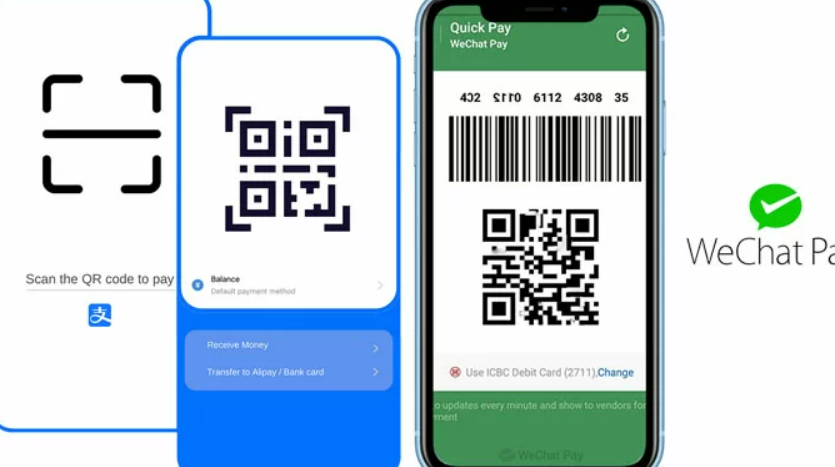
Navigating the China Visa Maze: A Comprehensive Guide for Smooth Application
Planning a trip to China—whether for tourism, business, study, or family visits—often begins with one crucial step: securing the right visa. As someone who has helped friends and colleagues navigate this process successfully (and learned from a few common pitfalls), I know that the key to a stress-free application lies in understanding the requirements, choosing the correct visa type, and preparing meticulously.
Planning a trip to China—whether for tourism, business, study, or family visits—often begins with one crucial step: securing the right visa. As someone who has helped friends and colleagues navigate this process successfully (and learned from a few common pitfalls), I know that the key to a stress-free application lies in understanding the requirements, choosing the correct visa type, and preparing meticulously. China’s visa system is structured to align with the purpose of your visit, and each category comes with specific documentation and procedures. This guide demystifies the entire process, from selecting the right visa to avoiding rejection risks, ensuring you’re fully prepared to embark on your Chinese adventure.

Understanding Visa Types: Matching Your Purpose to the Right Category
The first and most critical decision is choosing the appropriate visa type, as each is designed for a specific purpose and requires distinct supporting documents. China’s visa categories are denoted by letters, and selecting the wrong one is a leading cause of application rejection . Here’s a breakdown of the most common types for travelers:
Tourist Visa (L Visa)
Ideal for leisure travel, sightseeing, or family visits to non-relatives, the L Visa is the most popular choice for tourists. To apply, you’ll need a detailed travel itinerary, including round-trip flight bookings and confirmed hotel reservations . Alternatively, an invitation letter from a Chinese individual or organization can replace some itinerary documents, but it must include key details: your full name, passport number, travel dates, purpose of visit, and the inviter’s contact information, address, and signature (or official stamp for organizations) . Travel insurance is also recommended to cover unexpected medical expenses or trip disruptions.
Business Visa (M Visa)
For those traveling for commercial activities like trade fairs, negotiations, or business meetings, the M Visa is mandatory. The core requirement is an invitation letter from a Chinese trade partner or company, which must include the company’s full name, business license details, contact information, and a clear statement of the business purpose . First-time applicants may also need to provide a work certificate or business registration document from their home country, while repeat visitors often qualify for exemptions . Avoid using fake or incomplete invitation letters—embassies verify these documents rigorously, and falsification leads to automatic rejection .
Student Visas (X1 and X2)
Academic pursuits in China require either an X1 (long-term study exceeding 180 days) or X2 (short-term study up to 180 days) Visa. X1 applicants must submit the JW201 or JW202 form (issued by the Chinese educational institution) and a formal admission letter . For minors attending primary or secondary school, an additional “Confirmation Form for Accepting Foreign Students in Basic Education” is required . X2 Visa applicants need a short-term study information form (DQ form) or admission letter from the host institution. Both visa types may require a medical examination report to prove good health, especially for long-term stays.
Family Visit Visas (Q1, Q2, S1, S2)
China offers specialized visas for family-related visits, depending on the inviter’s status. Q1 and Q2 Visas are for visiting Chinese citizens or permanent residents: Q1 is for stays over 180 days (requiring residence permit application after arrival), while Q2 is for short visits . Both require an invitation letter from the family member, their ID or permanent residence permit, and proof of relationship (e.g., marriage certificate, birth certificate) . For visiting foreigners residing in China (e.g., a spouse working in Shanghai), S1 (long-term) and S2 (short-term) Visas apply, with similar documentation including the inviter’s passport and Chinese residence permit .
Work Visa (Z Visa)
Foreigners seeking employment in China must obtain a Z Visa, which requires prior approval from Chinese authorities. Key documents include a “Foreigners Work Permit Notice” and the final “Foreigners Work Permit” from the employer . A medical examination report and employment contract are also mandatory, and the work permit must align with the job description—any discrepancies can lead to rejection.
Transit Visa (G Visa)
For travelers transiting through China en route to another country, the G Visa allows stays of 72 to 144 hours (depending on the city). Requirements include a valid visa for the destination country (if applicable) and confirmed onward tickets within the transit period . Many major cities like Beijing, Shanghai, and Guangzhou offer visa-free transit, but it’s wise to apply for a G Visa if your itinerary is complex or you plan to leave the airport.
Core Application Requirements: Documents You Can’t Afford to Miss
Regardless of the visa type, certain basic requirements apply to all applicants, and failing to meet them results in immediate application denial . Here’s a checklist of non-negotiable items:
- Passport: Must be valid for at least 6 months beyond your intended arrival date in China, with at least two blank visa pages . Renew your passport if it’s near expiration—embassies won’t make exceptions.
- Visa Application Form: Since June 2025, all applicants must complete the form online via the official Visa for China website (https://avas.mfa.gov.cn) and upload required documents digitally . Double-check all information (name, passport number, travel dates) for accuracy—typos or inconsistencies are a top rejection reason .
- Photo: One recent color passport-sized photo (white background, no hat or accessories) that meets specific dimensions (usually 48mm x 33mm) . Blurry or non-compliant photos will delay your application.
- Additional Documentation: This varies by visa type but may include financial proof (bank statements showing sufficient funds—typically $100 per day of stay ), legal stay permits (for third-country citizens residing abroad), or previous Chinese visas (if applicable) .
For former Chinese citizens now holding foreign passports, special rules apply: first-time visa applicants must submit their original Chinese passport, while those with previous Chinese visas need copies of the old passport and visa . If your name has changed, include an official name change document to avoid confusion .
The Application Process: Step-by-Step Guide
Since the launch of online processing in June 2025, the application process has become more streamlined, but following steps correctly is still essential . Here’s a step-by-step breakdown:
Online Application: Log onto the Visa for China website, create an account, and fill out the application form for your visa type. Upload digital copies of your passport, photo, and supporting documents (e.g., invitation letter, itinerary) . Ensure all files are clear and in the required format (usually PDF or JPG).
Await Online Review: The consulate or visa center will review your application digitally. This takes 2-3 business days, and you may receive emails requesting additional documents—check your inbox regularly .
Submit Physical Documents: Once approved online, print the “Visa Application Certificate” and submit your original passport and any requested hard-copy documents to the nearest Chinese embassy, consulate, or visa application center . Some locations require appointments, so book in advance.
Fingerprint Collection and Payment: Most applicants (aged 14-70) must provide fingerprints during submission . Visa fees vary by country and visa type—single-entry visas typically cost $140-$180, while multiple-entry visas are more expensive. Payment methods include cash, credit card, or mobile payment (depending on the center).
Processing and Collection: Standard processing takes 5-15 business days . Expedited service (3-4 business days) is available for an extra fee, but only for emergency cases like medical emergencies or unexpected business trips. Once processed, collect your passport and verify visa details (name, passport number, validity period) immediately—report errors to the center within 24 hours.
Avoiding Common Pitfalls: Why Visas Get Rejected (and How to Prevent It)
Visa rejection is frustrating, but most cases are avoidable with careful preparation. Based on official data and common mistakes , here are the top reasons for denial and how to steer clear:
- Incomplete or Inaccurate Forms: Missing fields, typos in personal information, or mismatched details (e.g., name spelling different from passport) are the leading causes of rejection . Take time to review the form thoroughly, and cross-verify all data with your passport.
- Insufficient Supporting Documents: Forgetting key documents like invitation letters, flight bookings, or relationship proofs will result in denial . Use the official embassy checklist for your visa type and organize documents in a logical order.
- Fake or Invalid Documents: Embassies use advanced systems to verify invitation letters, financial proofs, and itineraries . Never submit forged documents—this not only leads to rejection but may ban you from applying for future visas.
- Passport Issues: Expired passports, insufficient blank pages, or damaged passports are automatic deal-breakers . Check your passport’s validity and page count well in advance.
- Unclear Purpose of Visit: Vague itineraries or conflicting information (e.g., applying for a tourist visa but mentioning business activities) raise red flags . Be specific about your plans and ensure all documents align with your stated purpose.
Practical Tips for a Smooth Application
To further increase your chances of approval, keep these tips in mind:
- Apply Early: Don’t wait until the last minute—standard processing takes 5-15 days, and delays can occur during peak travel seasons (e.g., Chinese New Year, summer holidays). Aim to apply 4-6 weeks before your trip.
- Follow Local Consulate Rules: Requirements may vary slightly by embassy or consulate, so check the specific guidelines for your jurisdiction (e.g., some require translated documents for non-English materials).
- Carry Cash: While larger visa centers accept cards, many small locations only take cash—keep small bills handy for fees .
- Prepare for an Interview: Some applicants (especially first-time visitors or those with complex itineraries) may be asked for an interview . Be ready to explain your travel plans clearly and honestly.
- Check Visa Validity: Chinese visas specify an “entry deadline” (last date you can enter China) and “duration of stay” (days you can stay after entry). Don’t confuse these—overstaying is a serious offense with fines and potential deportation.
Final Thoughts
Applying for a China visa may seem daunting at first, but with the right preparation and understanding of the process, it becomes a straightforward task. The key is to match your visa type to your travel purpose, gather all required documents, and avoid common mistakes that lead to rejection. Remember, embassies want to approve legitimate travelers—your job is to make it easy for them to verify your eligibility.
Whether you’re planning to explore the Great Wall, attend a business conference in Shanghai, study at a top Chinese university, or reunite with family, a successful visa application is the first step toward an unforgettable experience. By following this guide, you’ll navigate the process with confidence, minimizing stress and ensuring you’re ready to embrace all that China has to offer. So gather your documents, double-check your form, and get ready to embark on your journey—China awaits.
Do you need me to create a customizable checklist for your specific visa type (e.g., L, M, X1) that you can print and use for document preparation
Recommended

Best Places to Visit in China: My Journey Through History, Nature, and Modernity
Over the past five years, I’ve traveled to more th...

Step-by-Step Guide: How to Apply for Your China Visa in late 2025
Great news for travelers! As of September 30, 2025...

Walking the Spirit Way: My Journey Through the Ming Tombs
This article follows my personal journey through t...

A Journey of Taste and Heart: My Wandering Through Chinese Culture
When I clutched the visa emblazoned with the Great...

Beijing Transportation Guide: Navigate the Capital Like a Local
During my two years living and working in Beijing,...

Beijing Travel Guide: Uncover the Heart of China’s Past and Present
As someone who has wandered Beijing’s hutongs, mar...

Shanghai A Slow Journey Through Baoshan’s Golden Autumn: History, Nature, and Nostalgic Flavors
Seeking a break from the fast pace of city life, I...

Expert Guide: Mastering Mobile Payments in China (2025 Edition)
Below is an English guide designed for your intern...

Beijing Transportation Guide: Navigate the Capital Like a Local
During my two years living and working in Beijing,...

Shanghai’s A Wellness Journey Through Minhang’s Rural Retreats: Health, Heritage, and Harvest
As someone who craves balance between city life an...

My Journey Through Chinese Cuisine: A Symphony of Flavors
When I first set foot in China, I knew food would ...
